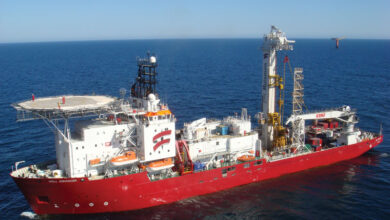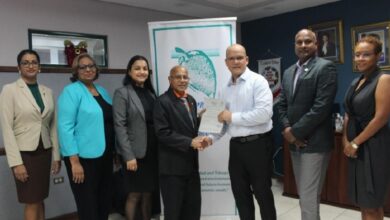Understanding people, processes and growth will guide industry through changes to achieve sustainability
By Joanne Liou, editorial coordinator

The dynamic nature of the industry brings about uncertainties and challenges that are nothing new or unheard of but nevertheless require specific efforts to overcome. The uptick in activity spotlights the industry’s potential to achieve sustainability through its people, processes and growth in the midst of change. An understanding of what is needed and a proactive approach will help the industry thrive in its up-cycle, according to panelists at the 7 March plenary session of the 2012 SPE/IADC Drilling Conference in San Diego, Calif. Each industry leader on the panel – Lori von Heyking, senior director of human resources, completions and production division at Halliburton; Brian “Bru” Brurud, founder and chairman of Check 6; and Richard Roper, senior director of capital projects at Ensco – offered their insights and approaches on how the industry can overcome the challenges in this dynamic environment. The session was moderated by Kelli Harrington-LaLonde, engineering adviser at Chevron.

The ongoing discussion of the industry’s work force – people who will retire, people who fill those positions and newcomers to the industry – requires companies to be one step ahead by growing their own and retaining them. “Sustainability with respect to people means keeping our talent pipeline full so that we have the right people with the right skillsets in the right place at the right time in order to meet business needs,” Ms von Heyking said. The starting point goes beyond recruiting and begins with educational institutions. Halliburton has partnered with universities around the world, providing grants and development programs, including experts and technology support, she explained.
Within Halliburton, the company has developed a comprehensive competency program to cover technical, business and leadership competencies. “Competency assessments form the bedrock of employee development,” Ms von Heyking said.
Taking into account the company’s global presence, the company has decentralized its approach to training. Regional training centers have been developed outside the United States, in addition to technical training centers in Egypt, Malaysia, Mexico, Russia and the UK. “Our experience has proven that having qualified, local talent and management supports understanding and adapting to local market conditions and cultures, which ultimately enables us to better serve our customers,” she continued.

Based on personal experiences in the aviation and oil and gas industries, Mr Brurud found a similarity between the two: its people. Within each industry’s work force, there is “dramatic diversification in ethnicity, gender and educational background,” he said. On top of that, “the correlation between high-hazard environments of aircraft carrier operations and drilling, the only thing that’s different is the hardware. The objectives, the processes are so similar.”
The process of safety management exists across the industry and begins with defining an objective, followed by planning, briefing and execution. While the process is utilized, the challenge comes in the details of the components and format of each step. The last step is to debrief, which is often dismissed. “The debriefing is typically the least utilized, most beneficial asset in any human system because it is the change in continuous improvement mechanism,” Mr Brurud said.
Taking lessons from fatal events in the aviation industry, such as the USS Forrestal fire in 1967 and KLM airline’s Tenerife collision in 1977, Mr Brurud illustrated the process of instilling leadership and standards from the start of one’s training. In the case of the Tenerife mishap, two years after the tragedy, crew resource management (CRM), comprising seven critical steps – situational awareness, assertiveness, decisiveness, communication, leadership, adaptability/flexibility and mission analysis – were implemented. “These skillsets need to be mastered, not just at the top but from the bottom all the way up,” he explained. “When you’re talking about a single human failure that can result in that kind of tragedy, this is what we had to do to get to the level where we are today.”

A proactive approach to build and sustain the industry’s people and processes is not unfounded. Mr Roper’s message on state of the industry was simple: “We are experiencing and managing growth on a big scale.” Significant growth from all the different plays in shale and ultra-deepwater will be required to maintain the current non-OPEC production by 2020. Furthermore, there is increased demand for oil, and “non-OECD oil demand has nearly doubled in the last 25 years.”
The industry is experiencing change on multiple fronts – geographies, regulatory forces, the work force and technologies. The growth goes beyond year-over-year consumptions and is more about the “cost and adaptation that is required to be successful. It must be managed by combining the right people with the right processes,” Mr Roper said.





GREAT ARTICLE ON APPROCH TO PAIRITTY TO ALL.I KNOW OF SEVERAL WOMEN ENGINEERS THAT WORK FOR HALLIBURTON AND THEY DO A GREAT JOB!